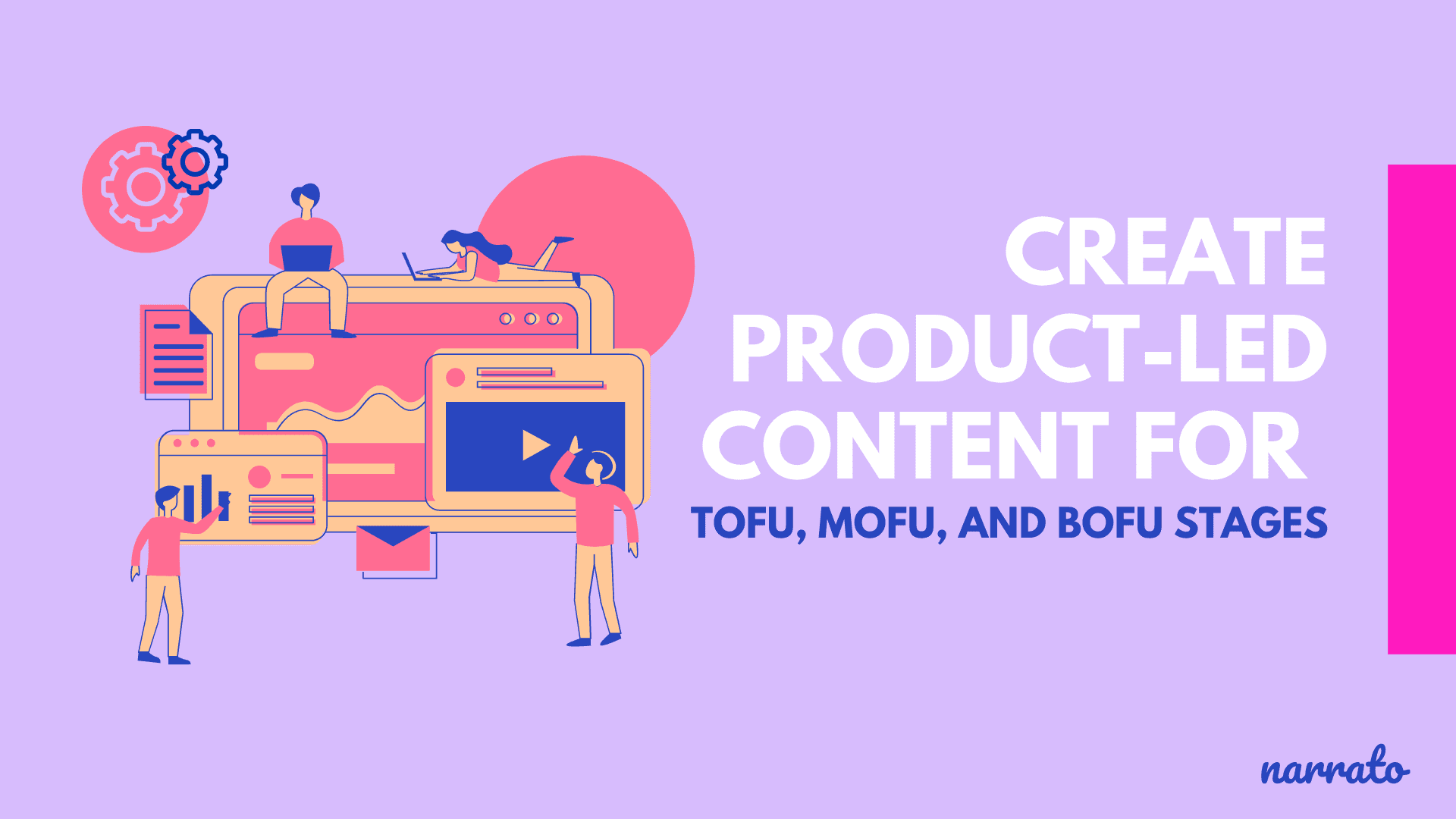Most SaaS marketers would agree that content is the main driver of growth. But how you create this content is just as important. You might be publishing quality blogs for your audience, staying on top of your social media content, providing the audience with useful resources, and still seeing little to no conversions. What am I doing wrong? – you might ask yourself. Go through your content again. Are there any mentions of your product in the content? Do you wait until the end to talk about your product? Or maybe, you’re just mentioning your product in passing, with an occasional link to the product-specific page. If you don’t portray your product as the hero it is meant to be, your audience won’t perceive it as one either. This is why creating product-led content is so important. With product-led content, you can place your product at the front and center, allowing it to speak for itself.
Previously, we’ve discussed the different types of product-led content that can help you ace product-led marketing. In this guide, we’ll take you through several examples of product-led content for each stage of the marketing funnel – Top of Funnel (TOFU), Middle of Funnel (MOFU), and Bottom of Funnel (BOFU).
Here’s what we’ll be covering in this article.
- Product-Led Content for Top of the Funnel – Creating Awareness
- Product-Led Content for Middle of the Funnel – Enabling Conversions
- Product-Led Content for Bottom of the Funnel – Qualifying

Creating effective product-led content is simpler than it looks. For starters, you’ll have to move away from thinking about content purely in terms of a brand channel. It can and should be a performance channel too, contributing directly to your conversion goals. You should know which type of product-led content works at which stage of the buyer journey. This will allow you to take better decisions with your content strategy.
With that let’s take a look at how product-led content can be customized for the TOFU, MOFU, and BOFU stages.
TL;DR here’s a quick summary video of this article.
Product-Led Content for Top of the Funnel – Creating Awareness
The first stage of the marketing funnel is all about piquing your target audience’s interest. Those who don’t know anything about your product should be intrigued enough by the content to check it out. Here are 4 types of product-led content you can create for prospects in the first stage of the marketing funnel –
1. Blog posts
Blogs are excellent for delivering engaging content to your audience, and when you employ the right SEO content planning, it also helps you build your online presence. Usually, you would start the process by writing on a topic/theme that is related to your niche. Now, here is the beauty of product-led marketing. Instead of just writing basic content that would interest your readers, you get an opportunity to show how your product would help your audience tackle a specific issue they’re facing. Instead of selling the product through the content, you’re guiding and educating your prospects by weaving a story around your product.
If you’re concerned about coming off as sales-y, don’t be. Here is a great example of a product-led blog post from Ahrefs. Note how they mention their tool in the first point itself. In fact, they take an opportunity to include their tools in every step. This establishes Ahrefs as the best tool for boosting traffic during the holiday shopping season.
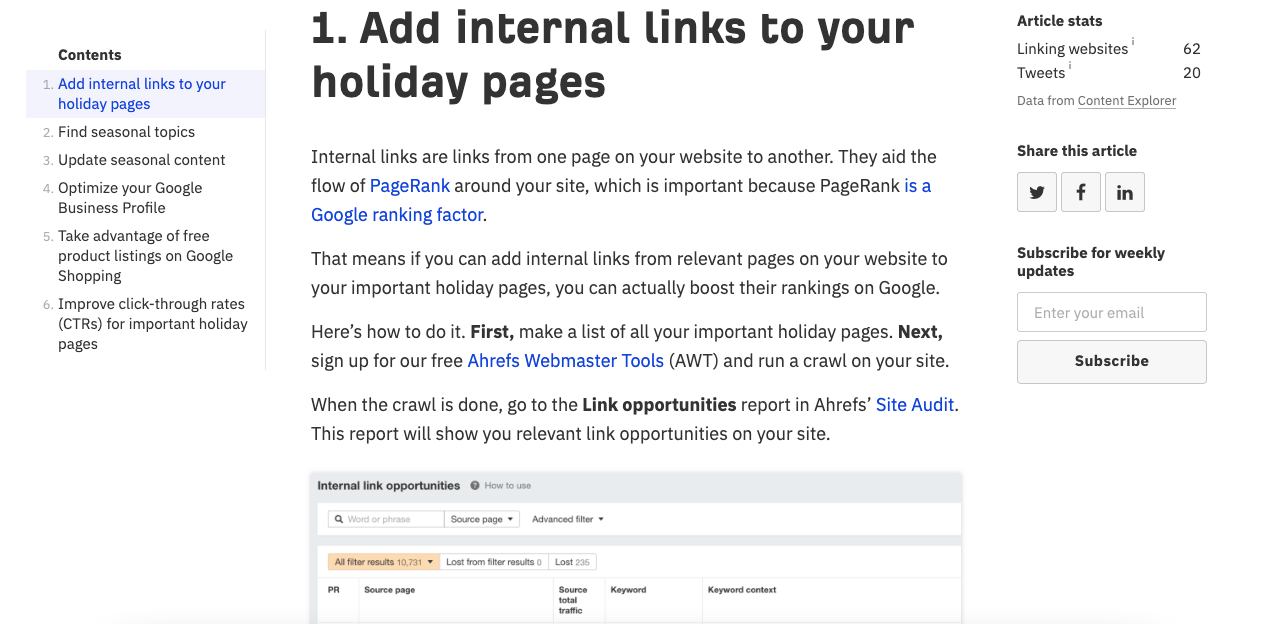
HubSpot is another SaaS company that does product-led blog posts beautifully. In fact, they started with the product-led technique even before it was discovered as a concept. Take this blog post for instance. HubSpot writers are excellent at weaving a story around the product, in a way that never feels out of place or forced. They encourage the readers to try out their product by adding mentions of their buyer persona generator tool several times throughout the blog post.
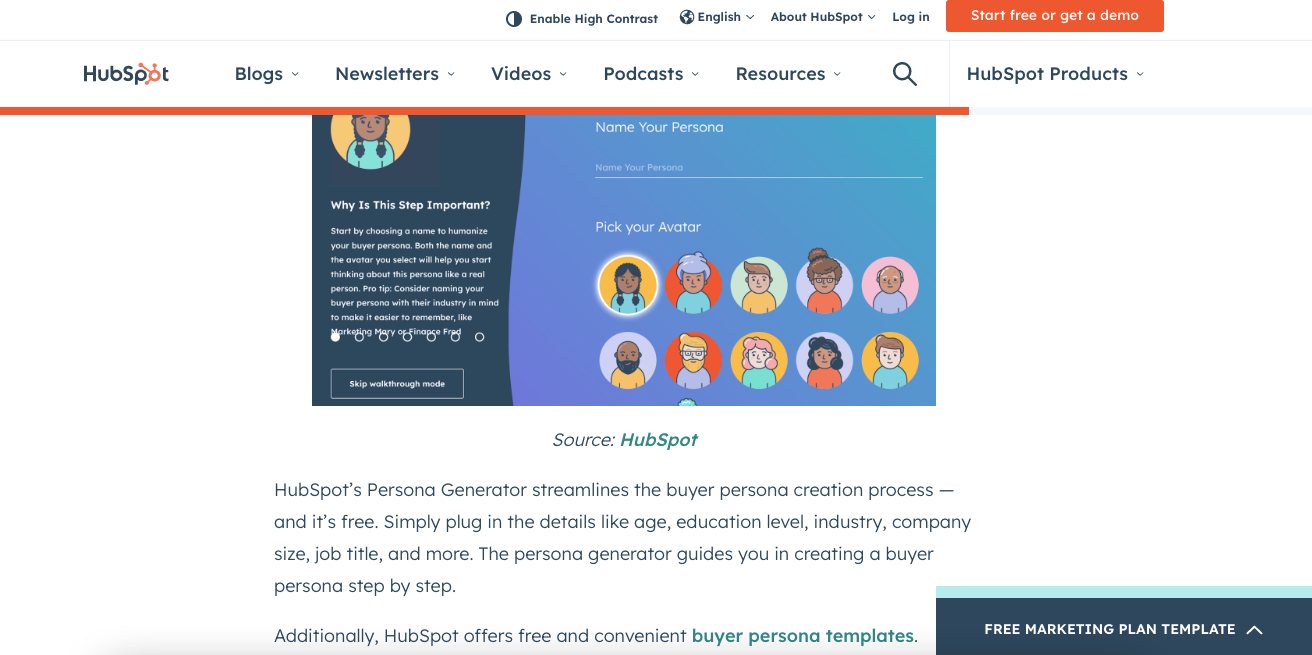
If you want to see some more examples of product-led blog posts, read our case studies on the ClickUp content marketing strategy and HubSpot content marketing strategy.
2. Social media content and PPC ads
Social media and PPC ads are the most effective content channels when it comes to customer acquisition. Combine it with product-led marketing, and you’ve got yourself a winner. When you’re designing your PPC ads and social media content, it’s a good idea to incorporate your product intelligently rather than employing an in-your-face marketing technique. In the PPC ads, use videos, product tours, screenshots, or GIFs to showcase different use cases, any product improvements, and new features. Use the same techniques for social media posts.
If you take a look at this Mailchimp ad on Facebook, you’ll notice how intelligently they place their automation features. They use a small 6-second video to explain how using Mailchimp’s automation features help in retargeting with Google Ads. Both the video and the marketing pitch are unique in the way they grab the audience’s attention, while still placing their product front and center.

Here is an example of a Twitter post from Semrush. They do a great job at explaining the use cases of the Semrush Keyword Magic Tool with the help of an infographic.

We, at Narrato also leverage the product-led technique when designing our social posts. We use a mix of images, infographics, videos, and memes to highlight the various features of our AI content planning and creation platform.
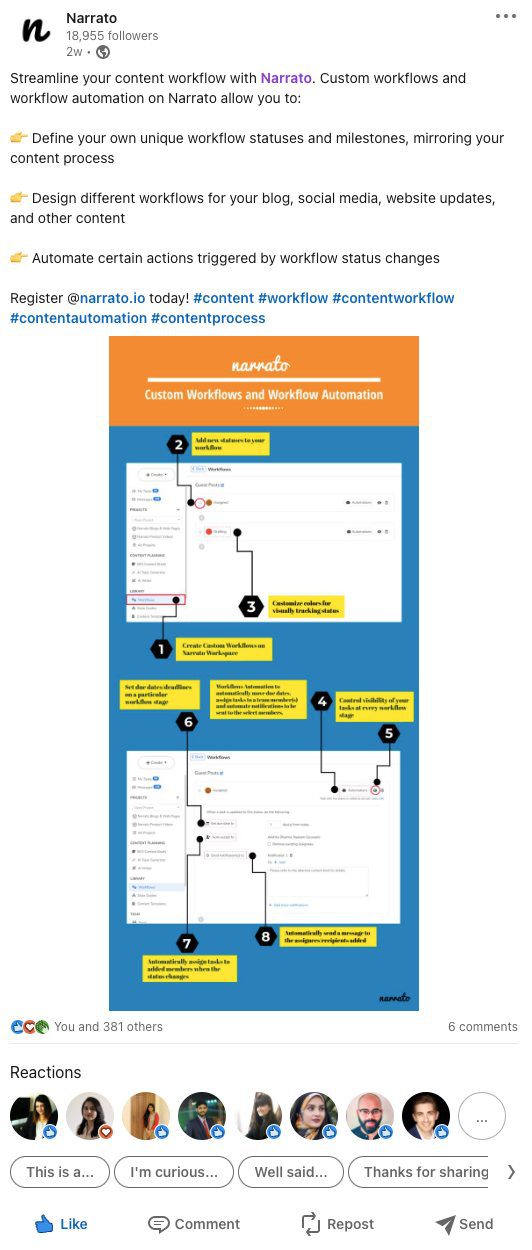
Combining interactive content with product-led marketing is another unique way to engage the audience on social media. We frequently hold polls on Narrato’s LinkedIn and Twitter channels to showcase the value of different product features. We usually start by asking a question that is related to our product use case in some way. After the results come in, we publish the results in the form of a graphic, along with a few words saying how Narrato can solve the problem for them.

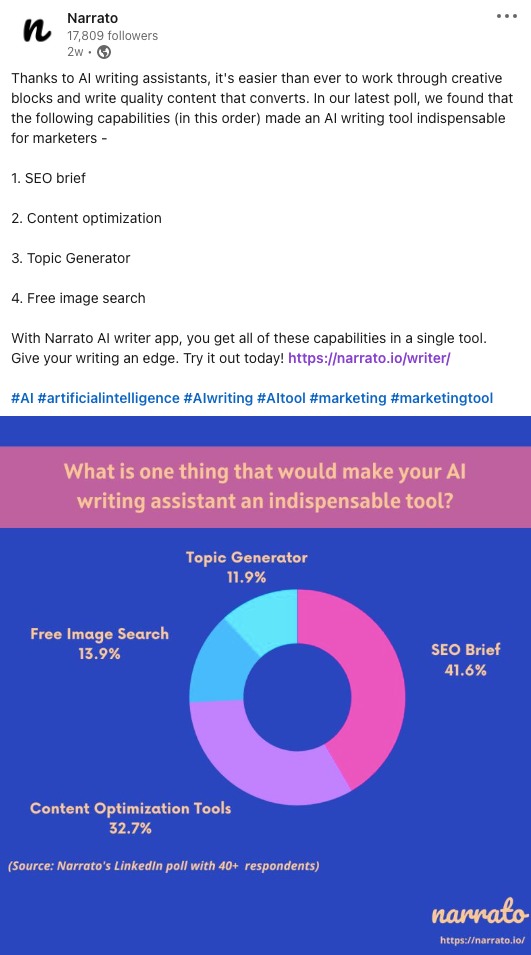
3. Guides and e-Books
Guides and e-Books are both excellent for answering your prospects’ burning questions. These educational product-led content types give an opportunity to educate the audience and show your expertise in a relatable way. Guides and e-Books can be built in a number of ways, in the form of blogs, videos, or infographics. Here is a content SEO planning guide from Narrato. This guide provides an in-depth overview of all the steps for building a content SEO strategy, along with screenshots of our own tools that can help in the SEO content planning process.

While blog posts make excellent guides, many of your prospects might be visual learners. For them, you can use short videos or infographics to show how your product addresses a key problem. Visual guides are excellent for getting your point across succinctly and efficiently, and building audience personas will give you a better idea about the kind of content your prospects would prefer. Here is an example of a visual guide from Semrush, which provides details steps for optimizing your content for SEO.

4. Outbound marketing campaigns
Outbound campaigns are possibly the hardest to design. When your prospects are receiving 100+ messages and cold emails from various brands, how do you make sure that your message stands out? One of the simplest ways is to let the product speak for itself. Instead of sending white papers or slide decks in your cold emails, consider using creative techniques to demonstrate everything your product can do to help them.
Here is a great example from Apple. In this email campaign, they’re pitching their recently launched video streaming service, Apple TV+. The email is designed in a way that grabs the audience’s attention almost immediately. It shows that Apple TV+ has a wide selection of movies, some of which (Emancipation and Spirited) can be only found on their platform. This way, they set themselves apart from other video streaming services.
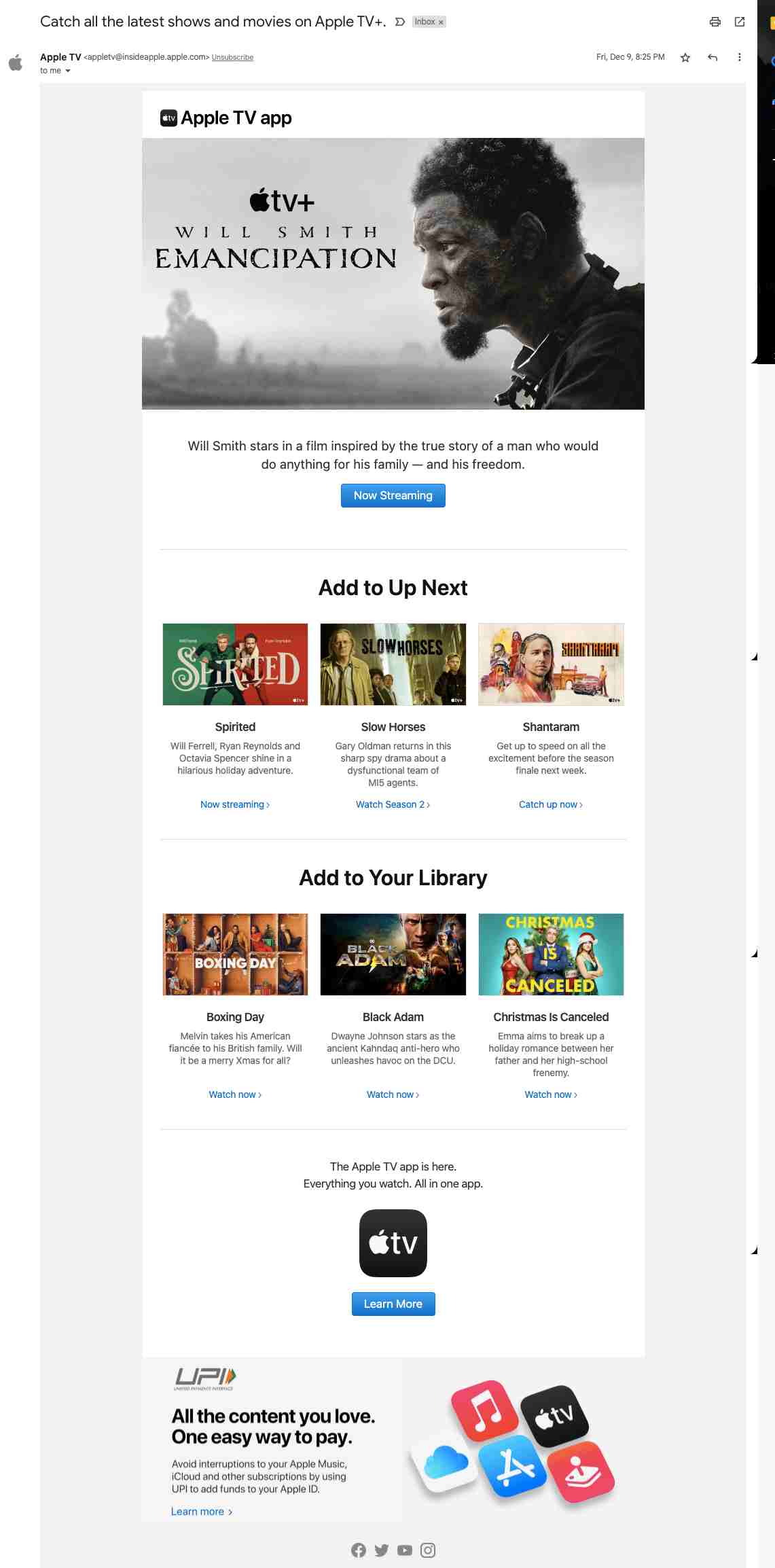
Product-Led Content for Middle of the Funnel – Enabling Conversions
After creating awareness about your product, the next thing you have to do is encourage these prospects to go further down the sales funnel. Driving conversions is the most important and also the most challenging part of this entire process. This does become a little easier when you incorporate product-led content to target buyers in the middle of the funnel. Here is how –
1. Retargeting emails and ads
If you successfully got some prospects to check out your website or sign up for a freemium, you’d have relevant data of them clicking around on your product or website. This gives you a better idea of what they’re looking for. You can use this information to retarget them with ads and emails. The key is to increase your trial-to-paid customer conversion rates, and product-led marketing can help you increase your chances of success many folds.
Here is an example of a retargeting email from Grammarly. Grammarly sends weekly writing updates to its users, providing them with insights about their vocabulary, productivity, and mastery of the app.
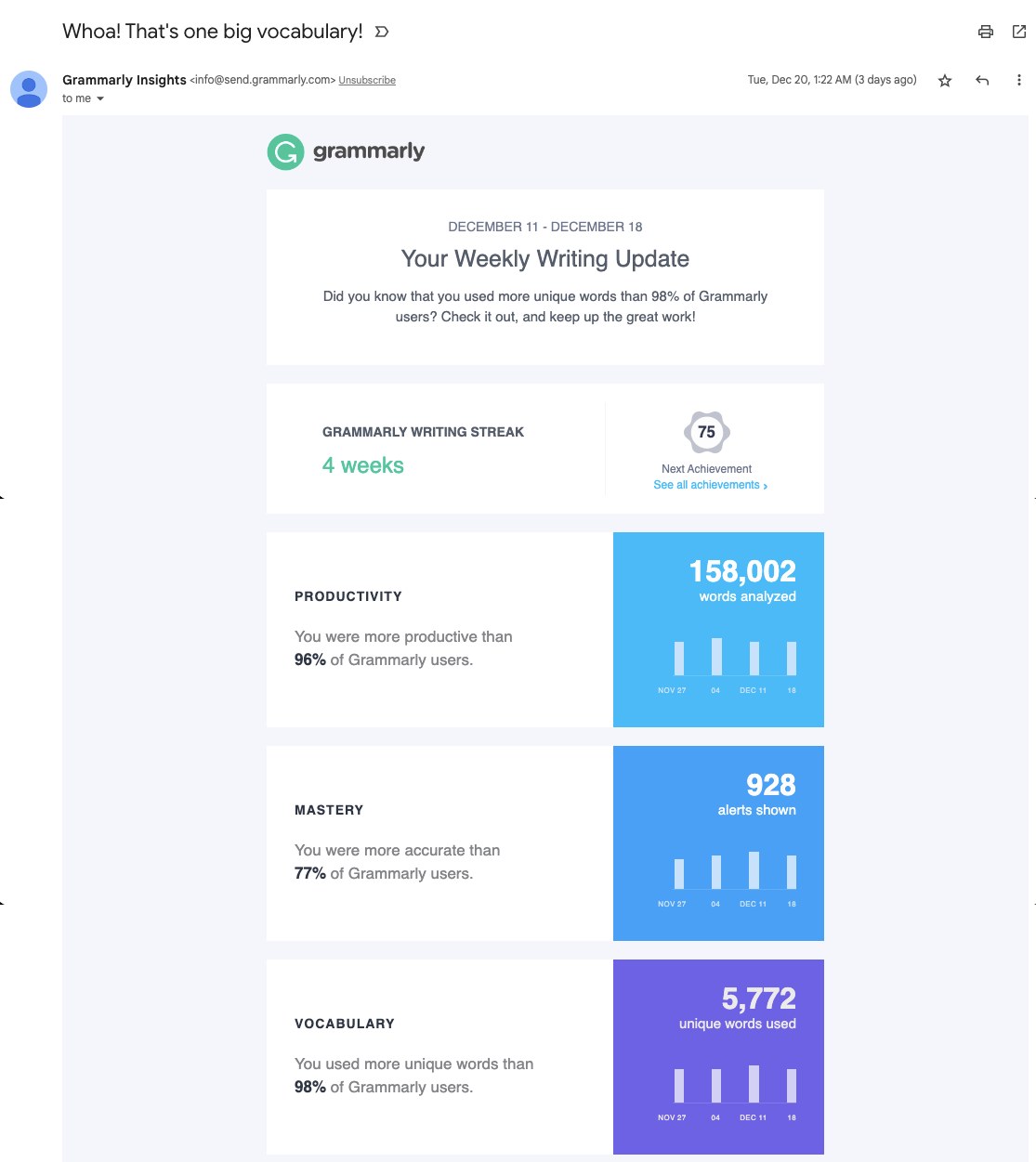
They also make sure to stuff these emails with several CTAs, enabling their users to get more from their product.

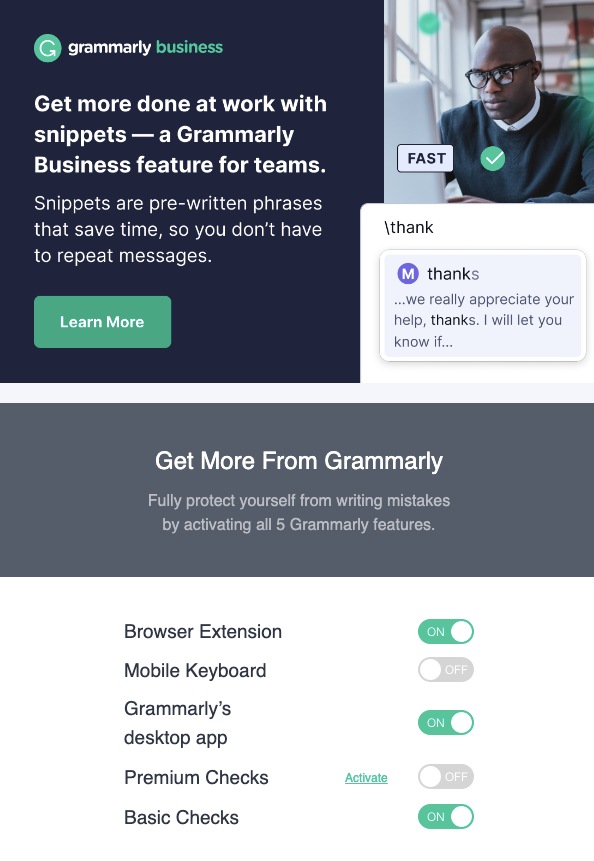
This is an ingenious way to leverage product-led content marketing. Show the other use cases of your product, while providing them with something that would interest them (in this case, personalized statistics).
Now, with the retargeting ads, you have to ensure that they are not generic introductory ones. Remember that you’re targeting people who have also seen your product, but not followed through with the free trial. You have to position your product so that it addresses their hesitations, convincing them to convert. HubSpot does this beautifully in this retargeting ad.
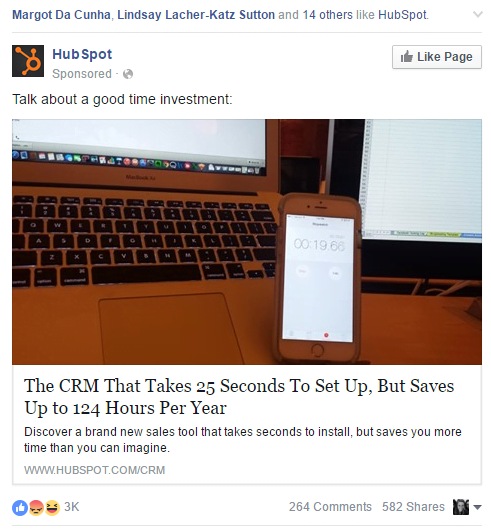
Instead of showing an ad for their product (which the prospects might’ve already seen plenty of times), they created an ad to address an issue faced by most time-strapped professionals. They must’ve realized that many of their prospects were not purchasing their CRM tool probably because they think it would take a long time to set up. This beautiful ad places their product front and center, but does so by providing tangible value to their users.

2. Product tours
The static graphics on your web pages certainly look nice, but they don’t do much in terms of driving conversions. Your website visitors probably want to see your product in action and product tours can help with this. By adding a comprehensive product tour to your website, you’ll be able to see which tour journeys and features produce the most qualified leads.
The A/B testing platform, Taplytics, probably does this best. They have included an ‘Explore Product’ option on the homepage itself, which immediately catches the attention of interested visitors. On clicking this, the visitor is taken to the product tour page for an interactive experience. The visitors are also asked to provide their basic details (name and email) before seeing the product tour, which makes it easier to send retargeting emails.
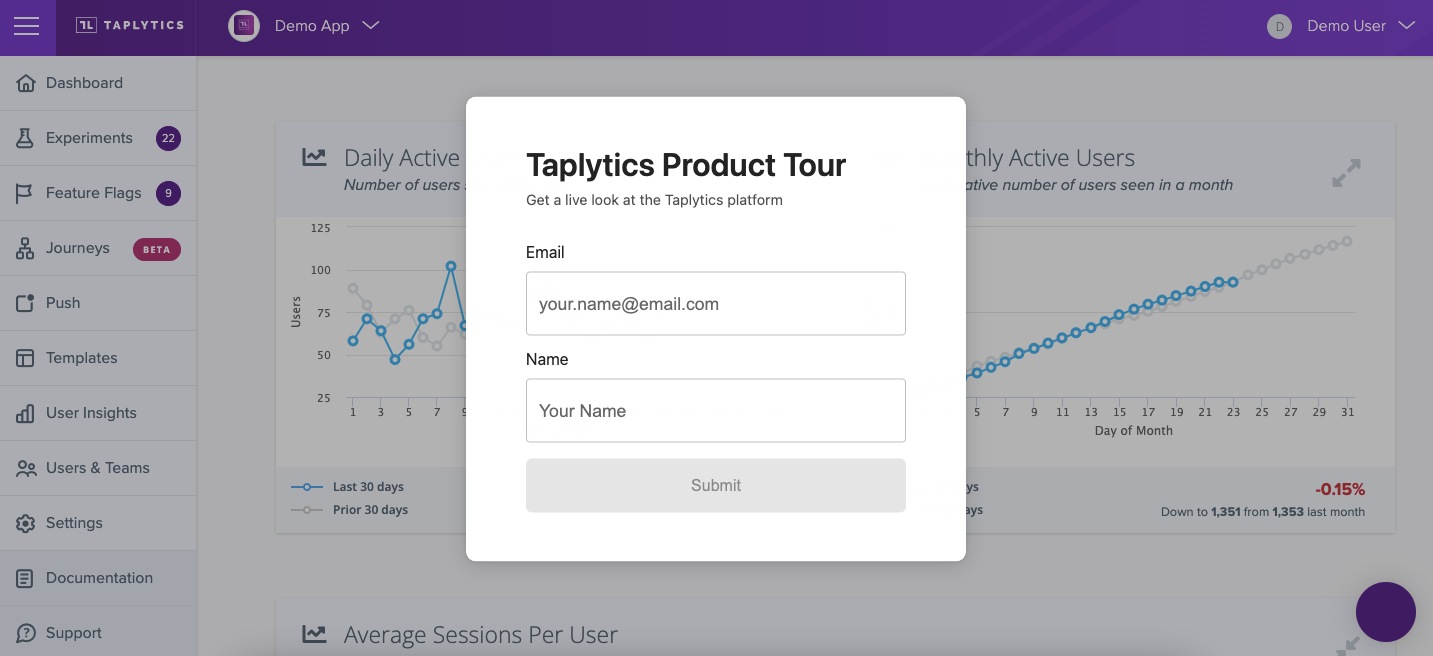
3. Case studies
Including case studies in your product-led marketing plan gives you an opportunity to show your prospects what they’ll be able to gain by investing in your product. You can create these case studies around your product, and explain how your product helped a client overcome any hurdle(s) they were facing. There’s probably no better way to turn your product into a hero.
At Narrato, we’ve been using this technique for quite some time. In this content marketing case study, we explained how an Indian startup, Park+, scaled content production by 6x and reduced their publishing time with Narrato.
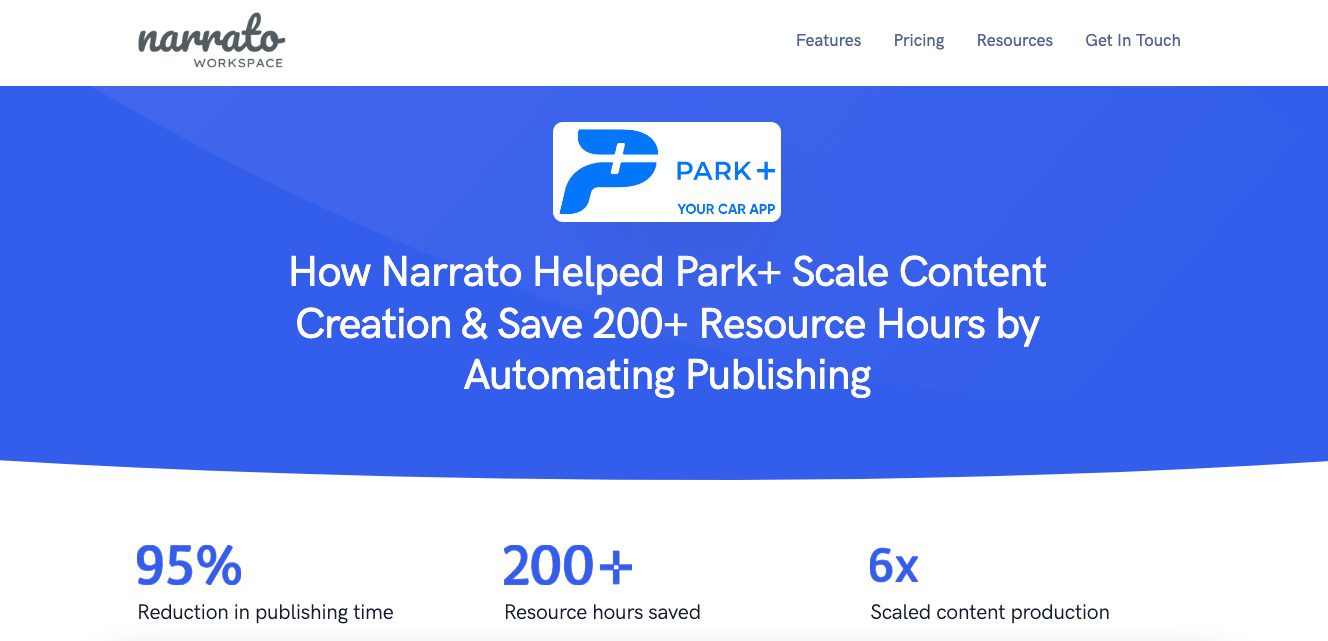
Here’s another great example of a product-led case study from Calendly. It explains how Calendly helped a SaaS Company, CallRail, book more meetings, close more deals and manage its workload.
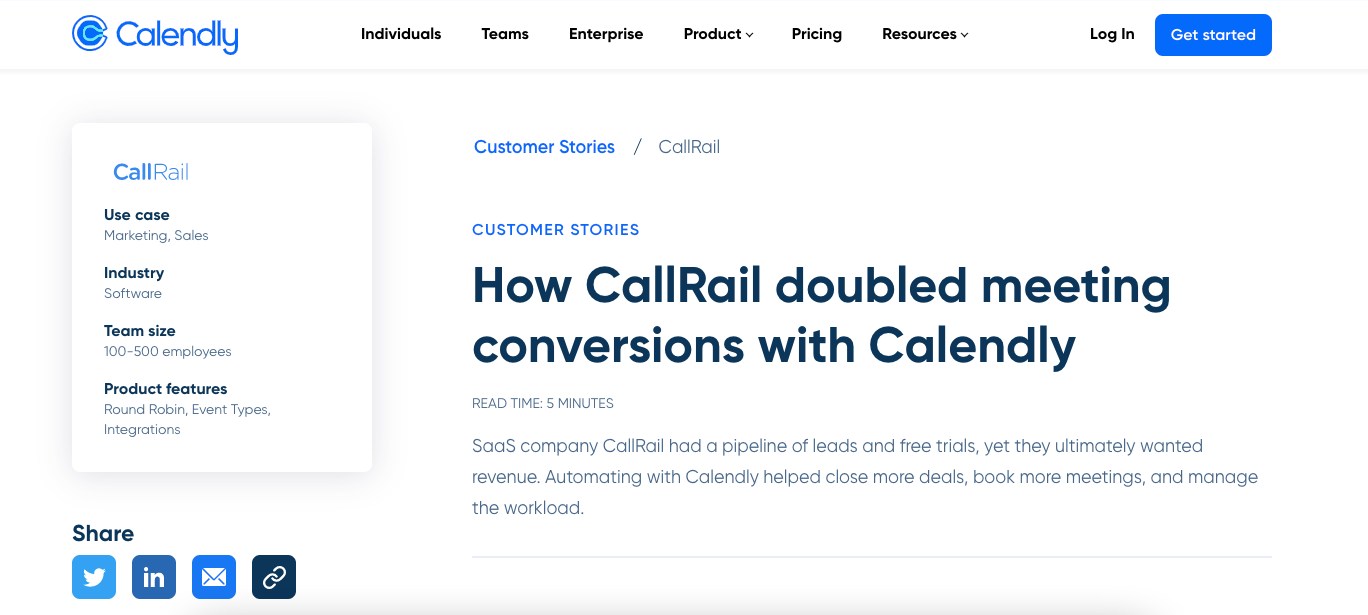
4. Webinars
Webinars are great for increasing brand awareness, but they also give you an opportunity to explain your product in a different way. Instead of one-way communication, you get a chance at live interaction with highly valuable prospects. And since they’ve already opted in for the content, you can design a product-led webinar series to drive them further down the funnel.
This is an example of a product-led webinar by Supermetrics, held in collaboration with HubSpot. It explores the best practices of using HubSpot Hubs and provides tips on monitoring and analyzing your performance with Supermetrics.
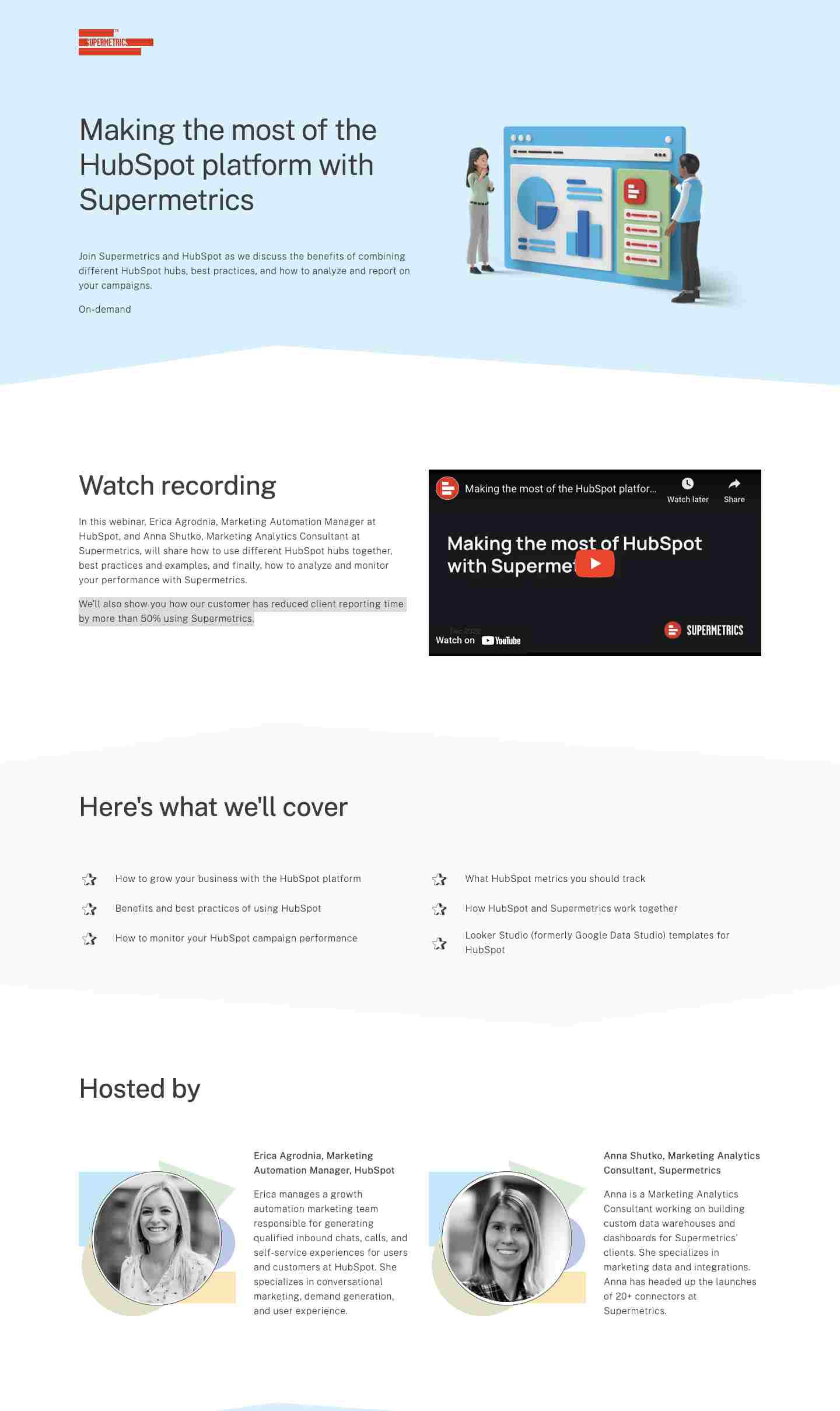
Product-Led Content for Bottom of the Funnel : Qualifying
Product-led content for the last stage of the marketing funnel should focus on turning leads into product-qualified leads. By this time, your prospects already know the product and have engaged with it to some degree too. To get them on board the platform, you can use the following types of BOFU product-led content –
1. Educational product tours
We’ve already discussed product tours in the MOFU product-led content, but product tours for this stage are a little different. These product tours don’t have to be form-gated, since their only purpose is to solidify the prospect’s decision to buy the product.
Here is an example of an educational product tour from Pitch, a collaborative presentation software. The product tour shows animated graphics of the product in action. It gives the leads a chance to see everything they can do using the product. At the end of the tour, there is a CTA encouraging the visitor to try Pitch.
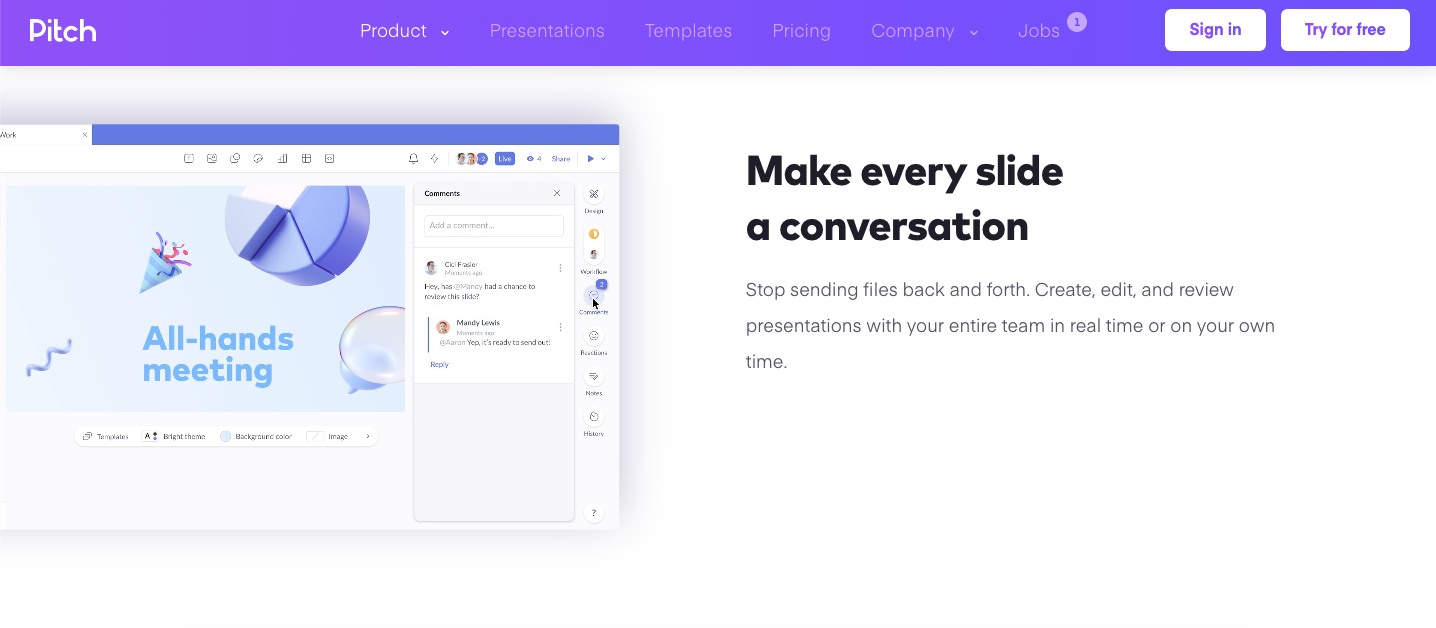
Here is another example of a product roadmap as part of the Airtable content marketing strategy. Airtable is a complex tool that gives you the power of SQL on something as simple as Google Sheets. To educate the leads in a simple way, they’ve designed a product tour that gives the users a hands-on experience of using the tool.
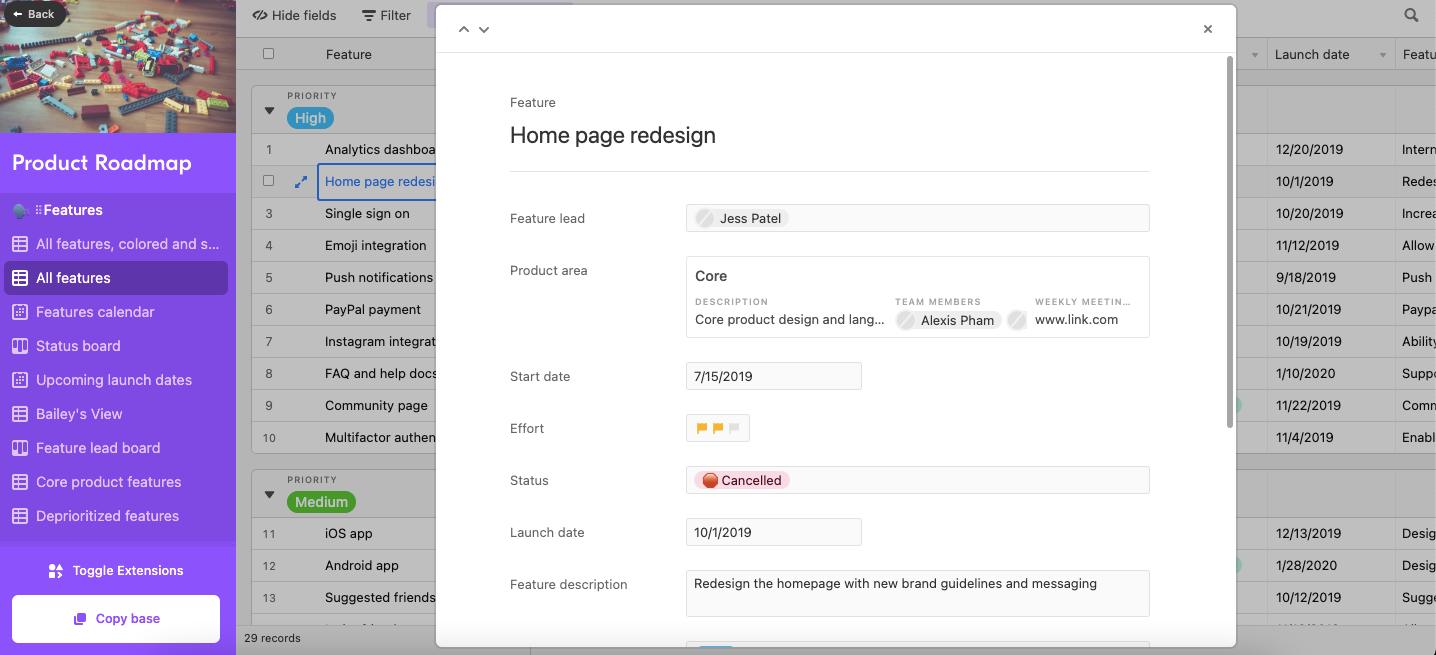
2. Post-demo leave-behinds
So a lead comes through and asks for a product demo. Your sales team does a wonderful job of giving them a product demo, but they might not be fully convinced. Or they might like to revisit the features of the products again. It is a good idea to have some post-demo leave-behinds ready for these situations. This could be a product tour (like the one created by Airtable in the previous example), or a video explaining the use cases.
Here, at Narrato, we’ve created a series of explainer videos that provide our leads a deeper look into the various features of the Narrato Workspace. This explainer video for Narrato’s AI Writing Assistant shows how users can speed up content creation with the help of this tool’s various features. More such videos can be found on Narrato’s YouTube channel.
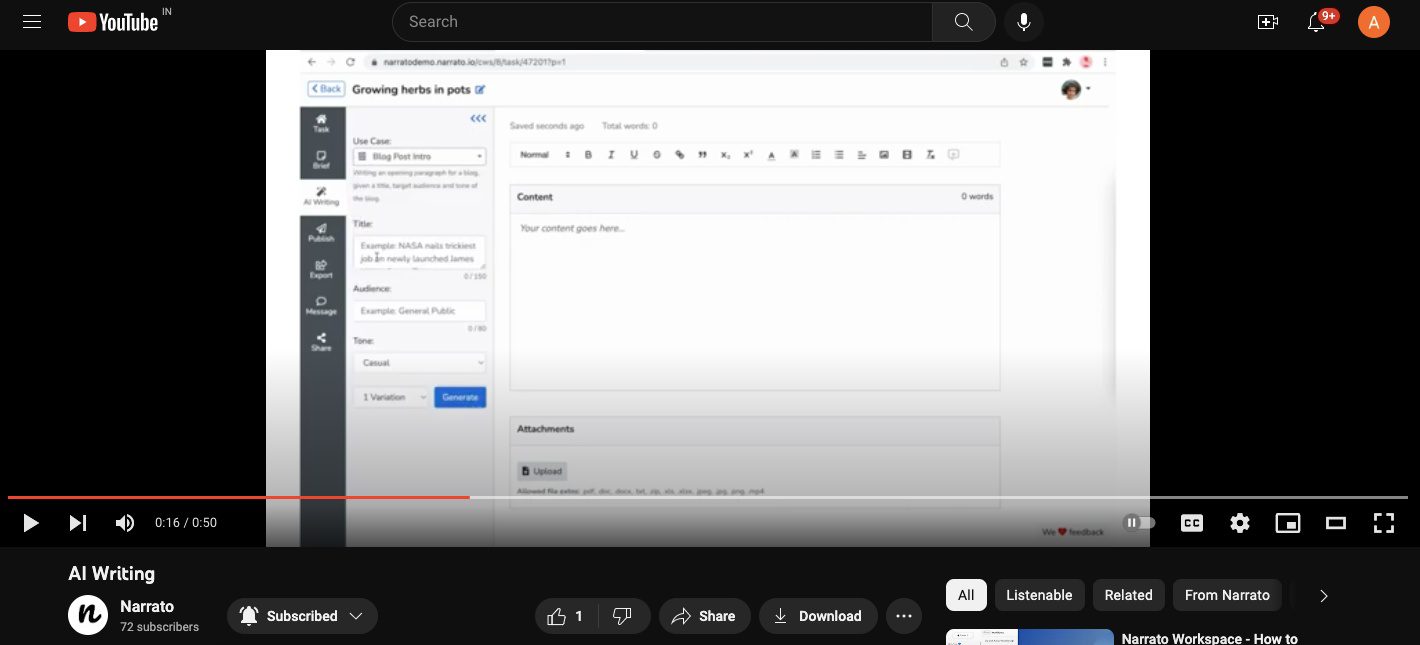
3. User-generated content
Your leads are much more likely to trust that there is value in your product when they hear it straight from your users. And that’s exactly what user-generated content (UGC) does. It provides you with a powerful tool to win over your potential customers. Besides that, UGC is the only type of product-led content that eases the load of content creation to some degree. So, there’s no reason why you shouldn’t be devising strategies to come up with user-generated content featuring your product.
Here is an example of UGC from Salesforce‘s Twitter channel. This post features a video that explains how Mercedez Benz was able to create a seamless customer journey with a Salesforce tool (Customer360). When a famous brand like Mercedez Benz found value in using the product, other prospective customers would be encouraged to try it out too.

Wrapping Up
If you’re going to take something from this article, let it be this –
- Using a product-first approach with all your marketing content
- Mapping custom product-led content for each stage of the marketing funnel
The examples of product-led content given in this article hopefully gave you a fair idea about creating targeted content for each stage of the marketing funnel (top of the funnel, middle of the funnel, and bottom of the funnel). And when you’re able to do it well, you’ll certainly see significant improvement in your conversions.


